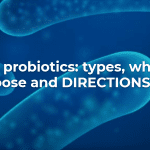
OMEGA3: What they are and where we can find them
OMEGA 3: what they are?
The omega 3 fatty acids owe their name to the chemical structure that characterizes them: along the carbonaceous skeleton there are in fact double bonds, the first of which is placed between the third and fourth carbon from the terminal end (omega carbon). These double bonds determine the degree of unsaturation, and therefore the distinction in unsaturated mono or poly.
From the biochemical point of view they are among the elements considered “essential”for which the organism needs an external introduction due to the inability to produce and/or satisfy ideally adequate quantities of these substances for the maintenance of the state of health.
There are many fatty acids belonging to this family, however those of greater interest for the physiological impact are three:
- ALA (alpha-linolenic acid): consisting of a chain of 18 carbon atoms and 3 double bonds, is considered the actual essential fatty acid in the strict sense and represents the parent of the whole series ω3, on which the action of specific enzymes (desaturased and elongated) leads to the production of other elements belonging to the same family.
- EPA (eicosapentaenoic acid): consisting of 20 carbon atoms and 5 double bonds.
- DHA (docosahexaenoic acid): consisting of 22 carbon atoms and 6 double bonds.

Functions
EPA and DHA exercise the true physiological functions once obtained from the biosynthetic pathway.
- They make up the cell membrane, ensuring the correct flexibility and fluidity, which translates into a better performance of the reactions of exchange and translation of biochemical intra and extra cellular signals.
- They have a strong action at the cardiovascular level, positively modulating the inflammatory state typical of the microenvironment of the atheromatosis plates, reduce platelet aggregation and the production of cytokines of a pro-inflammatory nature.
- They act centrally, participating in neurogenesis and the development of the neurocognitive apparatus.
- It balances parameters such as the LDL/HDL ratio or positively modulate insulin sensitivity, acting significantly on more aspects of metabolism.
- They also participate in the process of phototransduction, being structural components of the retina.
In short, real handyman elements!
Where are they located?
They do not share the same food sources or rather, are found in different proportions within them.
The alpha linolenic acid is mainly found in the oily seeds (chia, flax, sunflower, pumpkin, canola), in the germ or in the oils deriving from them or in the nuts. These foods also contain in association other types of fatty acids, such as omega 6 and 9, making them “hybrid” sources, but not for this reason of minor importance.
With regard to Eicosapentaenoic Acid and Docosahexaenoic Acid, they are mainly present in food of animal origin, in the meat of fish of the cold seas (salmon, cod), in the various types of blue fish, in krill and some types of algae.
Again, some derivatives are the most concentrated sources.
Omega 3 integration: why
Nature therefore seems to provide for everything and provides a wide selection of foods from which to draw to ensure proper introduction of these elements so valuable to health. Is a varied diet including these sources sufficient to meet needs? Although the answer may seem intuitive and obvious, in reality there are a number of factors of various kinds that together justify the use of specific supplements.
- Calories: regardless of the food source, consumption brings a significant amount of energy.Unless the extracts are pure, there is an introduction of other food components for which there is not always a need (we speak of food matrices mainly of a proteo-lipid nature) that contribute to the caloric value of the food. This aspect is avoided through the targeted integration of the molecules under investigation.
- Costs: often overlooked, this is my main aspect.Not everyone has the opportunity to regularly consume first-rate foods, especially when we are talking about fish sources. Think of the cost of wild salmon, prohibitive for some people, when placed in a context of everyday life. The purchase of a food supplement makes up for the impossibility of regular consumption of primary sources, thus limiting expenditure.
- Biochemical limits: so important, and yet, in our body the metabolism of omega 3 is strongly underregulated. The first stage of conversion of ALA is in fact charged with an enzyme (delta 6 desaturased) common to the omega 6 series metabolism. For questions of competition of the substrate together with the low enzyme activity, the action on ALA food is reduced; Lacking the trigger, the entire biochemical pathway is compromised, with poor EPA and DHA conversion rates. High concentration products of these two fatty acids or alternative sources that for intrinsic characteristics “bypass” this limitation (the grass pearl minor is the main example) can be very useful.
- Purity: food sources can be exposed to pollutants, such as pesticides or heavy metals, as is typically the case in large fish in which it can accumulate mercury, highly harmful to our body if taken in excess.
How to choose a quality product
The market for omega 3 supplements is very large and this can undoubtedly cause confusion in the consumer when comparing several products. Here are some tips to pay attention to:
- Find information about the origin of the sources used, such as wild fish and not subjected to intensive farming, which among many things alter the content in omega 3 in meat in favor of the inflammatory counterpart omega 6.
- Pay attention to the methods used for production: the omega 3 are highly unstable molecules, for which the processing requires absolute precision, from cold extraction, molecular distillation up to the final stages.Steps that however require expensive procedures that not all companies can guarantee. Hence the many price differences.
- Due to the easy degradation, make sure that there is a good concentration of antioxidants (vitamin E, astaxanthin, etc.).
- Form in which omega 3 are proposed. In order to be absorbed in the best way they must present as triglycerides and not as ethyl ester.
- Whenever possible, buy products certified ifos (“International Fish Oil Standards”), a declaration of quality and purity from contaminants issued by the body Nutrasource Diagnostic inc, an independent body considered the maximum guarantee for this type of products.
BIBLIOGRAPHY
Gammone MA, Riccioni G, Parrinello G, D’Orazio N. Omega-3 Polyunsaturated Fatty Acids: Benefits and Endpoints in Sport. Nutrients. 2018;11(1):46. Published 2018 Dec 27. doi:10.3390/nu11010046
Schwalfenberg G. Omega-3 fatty acids: their beneficial role in cardiovascular health [published correction appears in Can Fam Physician. 2006 Aug;52:952]. Can Fam Physician. 2006;52(6):734-740.
Swanson D, Block R, Mousa SA. Omega-3 fatty acids EPA and DHA: health benefits throughout life. Adv Nutr. 2012 Jan;3(1):1-7. doi: 10.3945/an.111.000893. Epub 2012 Jan 5. PMID: 22332096; PMCID: PMC3262608.
Nichols PD, Petrie J, Singh S. Long-chain omega-3 oils-an update on sustainable sources. Nutrients. 2010;2(6):572-585. doi:10.3390/nu2060572
https://certifications.nutrasource.ca/







